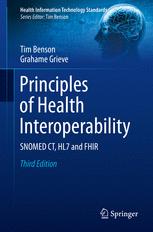

Most ebook files are in PDF format, so you can easily read them using various software such as Foxit Reader or directly on the Google Chrome browser.
Some ebook files are released by publishers in other formats such as .awz, .mobi, .epub, .fb2, etc. You may need to install specific software to read these formats on mobile/PC, such as Calibre.
Please read the tutorial at this link: https://ebookbell.com/faq
We offer FREE conversion to the popular formats you request; however, this may take some time. Therefore, right after payment, please email us, and we will try to provide the service as quickly as possible.
For some exceptional file formats or broken links (if any), please refrain from opening any disputes. Instead, email us first, and we will try to assist within a maximum of 6 hours.
EbookBell Team

4.4
72 reviewsThis book provides an introduction to health interoperability and the main standards used. Health interoperability delivers health information where and when it is needed. Everybody stands to gain from safer more soundly based decisions and less duplication, delays, waste and errors.
The third edition of Principles of Health Interoperability includes a new part on FHIR (Fast Health Interoperability Resources), the most important new health interoperability standard for a generation. FHIR combines the best features of HL7’s v2, v3 and CDA while leveraging the latest web standards and a tight focus on implementability. FHIR can be implemented at a fraction of the price of existing alternatives and is well suited for use in mobile phone apps, cloud communications and EHRs.
The book is organised into four parts. The first part covers the principles of health interoperability, why it matters, why it is hard and why models are an important part of the solution. The second part covers clinical terminology and SNOMED CT. The third part covers the main HL7 standards: v2, v3, CDA and IHE XDS. The new fourth part covers FHIR and has been contributed by Grahame Grieve, the original FHIR chief.